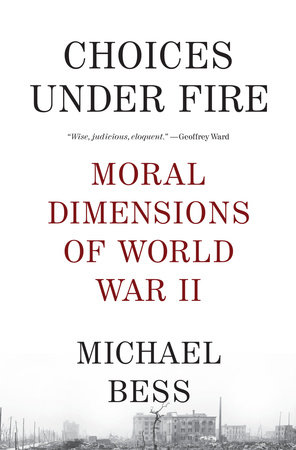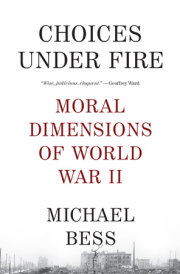Chapter One
A WIDE WORLD OF RACISMS
It’s a question of whether the white man lives on the Pacific Coast or the brown man.
—Austin Anson,
California Grower-Shipper
Vegetable Association, 1942
World War II was not a race war, but it was—to an extent that is often overlooked—a conflict in which race played a central role, from start to finish and in every theater of combat. To speak of a “race war,” in the conventional sense, is to imply a military struggle for supremacy between two groups who perceive themselves as being racially distinct. The Second World War was far too complex to be contained within such a clear-cut rubric: this conflict was just as much about territorial expansion, economic resources, and global hegemony as it was about racial purity; it ended up pitting Asians against other Asians, and led Germany into a mortal struggle with Great Britain—a nation categorized by the Nazis as falling clearly within the Aryan fold.
Nevertheless, if we conduct a careful survey of this global conflict, bearing the concept of race in mind, we may be astonished at the result. It is hard to find many significant aspects of this war in which racial distinctions did not play an important role. Racial ideas shaped both German and Japanese war aims, and helped spur these two peoples to take the aggressive actions that precipitated military hostilities. Racial prejudices on the Allied side led to a gross underestimation of Japanese capabilities in 1941—a misperception for which Britain and the United States paid dearly in December 1941 and the early months of 1942. Racial distinctions permeated the American war economy and the American military; they also led to one of the greatest breaches of constitutional governance in the nation’s history, the forced internment of a racially demarcated subset of American citizens. Racial hatreds animated soldiers on both sides in the Pacific War, leading to unprecedented levels of brutality in the conduct of combat and the treatment of prisoners. And racism, of course, lay at the heart of the Nazi genocide that has marked World War II as a chapter of unique horror in human history.
This chapter explores some of the manifold ways in which racial thinking shaped the Second World War; it is an exploration that continues in subsequent chapters, as we take up such diverse subjects as the “bystander” phenomenon during the Holocaust; the psychological mechanisms that allowed seemingly ordinary Germans to become mass murderers; the stereotyped imagery surrounding kamikazes; the clash between Germans and Russians on the Eastern Front; the atomic bombing of Hiroshima and Nagasaki; the war crimes trials at Nuremberg and Tokyo; the postwar occupation of Japan; and the enduring transformation that the war brought about for racist ideas and practices around the world, in the decades since 1945.
In order to understand World War II, we need to understand why three disparate and physically far-removed nations—Germany, Italy, and Japan—ended up fighting as part of a single alliance, the Tripartite Pact of 1940. What did they perceive themselves to be fighting for? And how did this bind them together? There are two ways to go about answering these kinds of questions. The first approach lies in the realm of politics, economics, and military power: we trace what these three nations wanted by looking back on their diplomacy, their wars, their economic troubles, the domestic political upheavals they experienced in the period twenty or thirty years before the outbreak of the Second World War.
This is a perfectly valid approach (and we duly take it up in chapters Two and Three), but by itself it is not enough. If we really want to get at the motivations of the Germans, Japanese, and Italians, then we have to go deeper, into the realm of ideas. Ultimately, it is here that the war really began—in a basic set of attitudes that came to be quite widely held throughout Europe and the United States (and later in Japan) around the last decades of the nineteenth century, a cultural current that historians call Social Darwinism.
Charles Darwin published his
Origin of Species in 1860. At its heart lay the notion of natural selection—the evolutionary process resulting from the interaction between random genetic mutations in animal populations and the special challenges and opportunities presented by particular habitats. It amounted to a genuine intellectual revolution. But this complex, subtle notion came to be popularized, in the decades after 1860, as “survival of the fittest”— a much simpler, cruder vision of all nature’s creatures engaged in a ruthless competition for scarce resources. All life, everywhere, was unavoidably caught in this relentless struggle for survival, for domination of the available ecological niches.
From here, it was a relatively easy intellectual move to take these ideas out of their context in the physical world of zoology and botany and reapply them to the human world of society and history. Hence the term “Social Darwinism”—survival of the fittest, readapted as an interpretive guide to understanding all human interactions, from the behaviors of individuals to the mass movements of entire nations or races. Everywhere the message was the same: If I don’t dominate you, you’ll dominate me. If I survive, it will have to be at someone else’s expense. Resources are scarce, and only the most efficient competitors—the smartest, the strongest, the most ruthless— will live to struggle another day. Whenever you see two groups of people coexisting peacefully, it is merely an illusion, or a temporary truce. Underneath the surface, they cannot help but be secretly preparing a coup against each other. Such are the realities of Human Nature.
Social Darwinist thinkers of the late nineteenth century also added a twist to this logic, an intriguing moral tone. If I have succeeded at dominating everyone else, then this is a sign that I
deserve to be the leader, the privileged arbiter of everyone else’s destinies. By exercising domination over others, by mercilessly weeding out the weak and unfit, I am performing a higher service to the species as a whole. I am keeping the species strong and vigorous, primed for successful competition against other species. This process may appear cruel at times, but the logic of natural selection looks to the species, not to the individual. Weak and unfit individuals place an unacceptable burden on the rest of their group, and though it may appear heartless, they must be periodically selected and cast away, if the collective organism is to remain dynamic and healthy.
Once one had accepted this line of argument, it became easy to apply the logic to entire racial groups. In the millennial struggle, the Social Darwinists argued, some races had clearly emerged as superior competitors. How do you tell which races are better suited to rule and to dominate than others? Simply look and see who’s on top of the heap. By definition, they are the fittest, and therefore the ones who are also morally justified in exercising control over all the rest. This is Social Darwinism in a nutshell.
It is worth noting that this ideology was not born in Germany, Italy, or Japan, but rather in England and France.2 Thinkers like Gustave Le Bon in France or Herbert Spencer in England—or, in the United States, the popular writer William Graham Sumner—were among the key proponents of this ideology during the late nineteenth century. Social Darwinism proved attractive for many reasons. At one level, it was refreshingly simple and straightforward, so that just about anyone could grasp it: “Either dominate or be dominated; it may not be pretty, but that’s the way life is.” At a more visceral level, it was also flattering to think of oneself (or one’s social group) as King of the Hill. Finally, it meshed neatly with the widespread phenomenon of imperialism, conveniently justifying all kinds of excursions into the rest of the world, subjugating other peoples in the name of Progress and the Higher Good of the Species. The fact that Europeans had planted their flags all over Asia, Africa, and the Middle East could be easily explained by this relatively accessible and simple rationale: “We Europeans are superior to all other peoples on earth. It is our right to go and conquer them. In fact, it is our duty to do so, for in conquering them we are bringing them the benefits of our superior civilization: our religion, medicine, technology, customs, literature—everything that makes us so obviously more advanced than they, the primitive ones.”
In some cases, moreover, the Social Darwinist thinkers added the piquancy of paranoia to this heady mix of ideas. It is certainly true, they argued, that the non-European races are weaker and less advanced than us white Europeans, but the plain fact is that they reproduce like rabbits. A real possibility exists of their swamping us by their sheer numbers, the way parasites or viruses can eventually overwhelm a healthy animal’s body. Hence, we have to move aggressively in preempting them from gaining too much ground, bringing them firmly under our tutelage, so that we can restrain not only their actions, but their reproductive rates as well. We have to master them completely, assuming full control over their lives, before they simply overwhelm us.
Since the nineteenth century, a long succession of critics have passionately argued against the Social Darwinist vision, denouncing it as dangerous and simplistic nonsense. Their key argument has been that the principles of natural selection discovered by Darwin only applied within the realm of animals and plants. Animals obeyed instincts, the inflexible behavior patterns with which they were born; they submitted blindly to the demands and limitations imposed on them by their biology and their surroundings. Animals could certainly adapt, through natural selection, but this was not a matter of conscious, deliberate choice: it was an unconscious process that
happened to them collectively over many generations, not something they undertook as individuals acting on their own initiative.
Human beings were fundamentally different, according to the opponents of Social Darwinism, because humans inhabited a culturally mediated social world. Here, one entered the realm of free will, of deliberate reshaping of environments. Humans were not
only animals: they also had language, ethics, religion, complex social networks of cooperation, elaborate legal systems to regulate their competition. Concepts like justice or morality played at least as important a role in shaping the human world as did the struggle to get ahead: both these forces, competition and cooperation, combined to give humans the power they enjoyed over their physical environment. Precisely because the human world was qualitatively different from that of the animals, applying the same set of rules to both realms could not help but yield fundamental errors and contradictions.
Many Europeans, however—especially in the late nineteenth century— remained unaware of this critique, and found the adaptation of Darwinian ideas to the human world quite compelling. In the half- century following 1860, the Social Darwinist ideology became highly influential throughout Europe and America (and later in Japan as well): ultimately, one of the most important converts to this grim worldview was Adolf Hitler himself.
Hitler was in many ways an extremely complex, devious, enigmatic person; yet in one respect he possessed a character trait that rendered him predictable and transparent: he saw nearly everything in the light of this Social Darwinist vision. For him, human life, at its deepest essence, was about ruthless, unremitting competition. At the level of individuals, it was Me against You; at the level of collectivities, it was Our Group against Your Group.
One anecdote from the last days of Hitler’s life is particularly revealing in this regard. It was March 1945, and the Russians were closing in on his bunker in Berlin. The Third Reich lay in ruins all around him, and he had finally given up hope that any of the secret weapons he’d been frantically pursuing might still emerge, like a deus ex machina, to save Germany. Hitler called in Albert Speer, his economics minister, and issued a scorched-earth order calling for the total destruction of any surviving assets that might prove useful to Germany’s enemies—factories, bridges, mines, railroads. Speer was appalled: How would the German people live after the war, he asked his führer, if such a policy were implemented? Hitler replied: “There is no need to consider the basis for even a most primitive existence. On the contrary, it is better to destroy even that, and to destroy it ourselves. The nation has proved itself weak, and the future belongs to the stronger Eastern nation.”3 The great life-or-death struggle between Aryans and Slavs had played itself out: the Aryans had failed in the contest, and now deserved to disappear from the earth. Even in the face of death, Social Darwinism gave Hitler a handle for making sense of the world that was crashing down around him on all sides. It must have been an agonizing choice, but in the end he preferred to cut himself loose from his own sense of Aryan superiority, rather than relinquish the pitiless vision that had imparted fundamental orientation and purpose to his life.
This worldview of unending competition among peoples is not, in itself, enough to explain why World War II occurred, but it amounts to what philosophers call a “necessary condition” for the war. The Japanese, Germans, and Italians, despite all the profound differences in their cultures and histories, shared a fundamental set of ambitions in common: to redress perceived injustices and raw deals of the past; to stop being treated as second-class citizens; and ultimately, to climb to their rightful place at the top of the world heap.
Japan, after centuries of isolation, wanted to be a great power and colonial empire like France and Great Britain. The Japanese people perceived themselves as being isolated on relatively small island territories, confined in living space, and intolerably vulnerable to military and economic strangulation. Japanese elites felt rage at the condescending and racist treatment they had received at the hands of Europeans and Americans, who openly regarded Japan as a second-class nation.
Germany in the 1930s was still seething with bitterness and humiliation at the loss of the First World War and the harsh peace treaty of Versailles. Hitler promised, most significantly, not only to rescue the German economy from the woes of the Great Depression, but to lift the nation back to its rightful place at the very front rank of international power.
Italy, after centuries of foreign occupation and internal strife, had only achieved national unity as recently as 1870. Amid deep disappointment with the outcome of the First World War, and incipient social and economic chaos in the early 1920s, Benito Mussolini swept to power, promising the Italians that he would regain for them the glory of the old Roman Empire.
Copyright © 2006 by Michael Bess. All rights reserved. No part of this excerpt may be reproduced or reprinted without permission in writing from the publisher.






